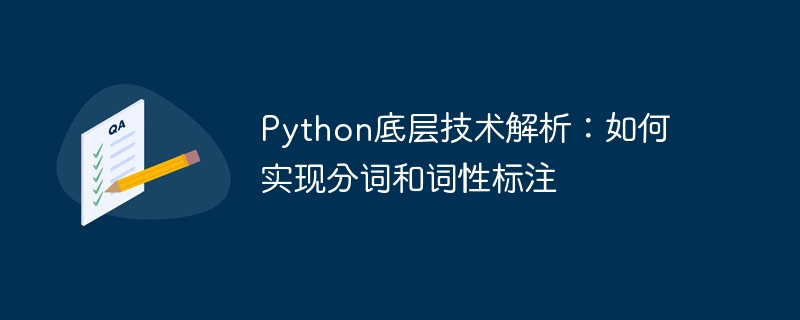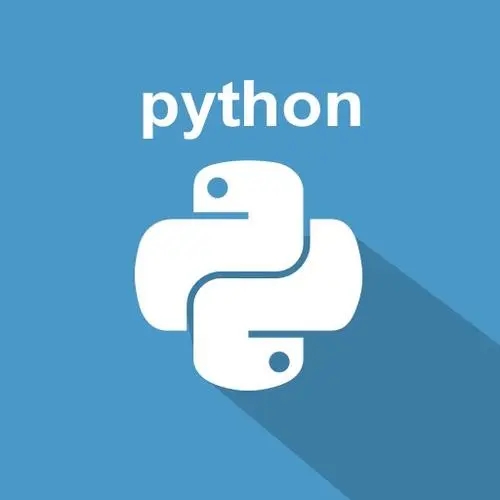
Python底层技术解析:如何实现分词和词性标注,需要具体代码示例
在自然语言处理(NLP)中,分词和词性标注是一项非常重要的任务。分词是将连续的文字序列切分为单个词语的过程,而词性标注则是为每个词语确定其在文本中的词性,如名词、动词、形容词等。本文将介绍如何使用Python底层技术来实现分词和词性标注,并附带具体的代码示例。
分词(Word Segmentation)
分词是NLP中的基础任务之一,它在中文文本处理中尤为重要。Python中有多种实现分词的工具,如jieba、snownlp等。这些工具在高层次上提供了丰富的功能,但如果我们想了解底层的原理,可以通过实现一个简单的分词器来学习。
立即学习“Python免费学习笔记(深入)”;
下面是一个示例代码,演示了如何实现一个基于最大匹配算法的中文分词器:
class MaxMatchSegmenter:
def __init__(self, lexicon_file):
self.lexicon = set()
with open(lexicon_file, 'r', encoding='utf-8') as f:
for word in f.readlines():
self.lexicon.add(word.strip())
def segment(self, text):
result = []
while text:
for i in range(len(text), 0, -1):
if text[:i] in self.lexicon:
result.append(text[:i])
text = text[i:]
break
else:
result.append(text[0])
text = text[1:]
return result
# 使用示例:
segmenter = MaxMatchSegmenter('lexicon.txt')
text = '自然语言处理是人工智能的重要领域之一'
result = segmenter.segment(text)
print(result)在这个示例中,我们通过读取一个词典文件,将所有词语存入一个集合中。然后,我们按照最大匹配算法,从待分词文本的左边开始,尝试匹配最长的词语,将其作为一个词语输出,同时从待分词文本中移除该词语。如果没有匹配成功,则将当前字符作为一个单字输出,同时从待分词文本中移除该字符。重复上述过程,直到待分词文本为空。
词性标注(Part-of-Speech Tagging)
词性标注是根据每个词语在上下文中的语法和语义,确定其词性类别的过程。Python中有多种实现词性标注的工具,如NLTK、StanfordNLP等。这些工具提供了训练好的模型和接口,可以直接使用高层次的API进行词性标注。但是,如果想要深入了解底层的实现原理,可以尝试使用一些基于统计和机器学习方法的算法。
下面是一个示例代码,演示了如何使用nltk库实现词性标注:
import nltk text = '自然语言处理是人工智能的重要领域之一' tokens = nltk.word_tokenize(text) tags = nltk.pos_tag(tokens) print(tags)
在这个示例中,我们首先使用word_tokenize函数将待标注文本进行分词,然后使用pos_tag函数为每个词语进行词性标注。pos_tag函数会返回一个元组列表,元组中的第一个元素是词语,第二个元素是标注的词性。
总结
本文介绍了如何使用Python底层技术实现分词和词性标注,并提供了具体的代码示例。分词和词性标注是NLP中的基础任务,掌握了它们的底层原理,可以更深入地理解和应用相关的高级工具和算法。通过实现自己的分词器和词性标注器,我们可以深入了解它们的工作原理,并进行相关的优化和改进。
以上就是Python底层技术解析:如何实现分词和词性标注的详细内容,更多请关注php中文网其它相关文章!

python怎么学习?python怎么入门?python在哪学?python怎么学才快?不用担心,这里为大家提供了python速学教程(入门到精通),有需要的小伙伴保存下载就能学习啦!

Copyright 2014-2025 //m.sbmmt.com/ All Rights Reserved | php.cn | 湘ICP备2023035733号